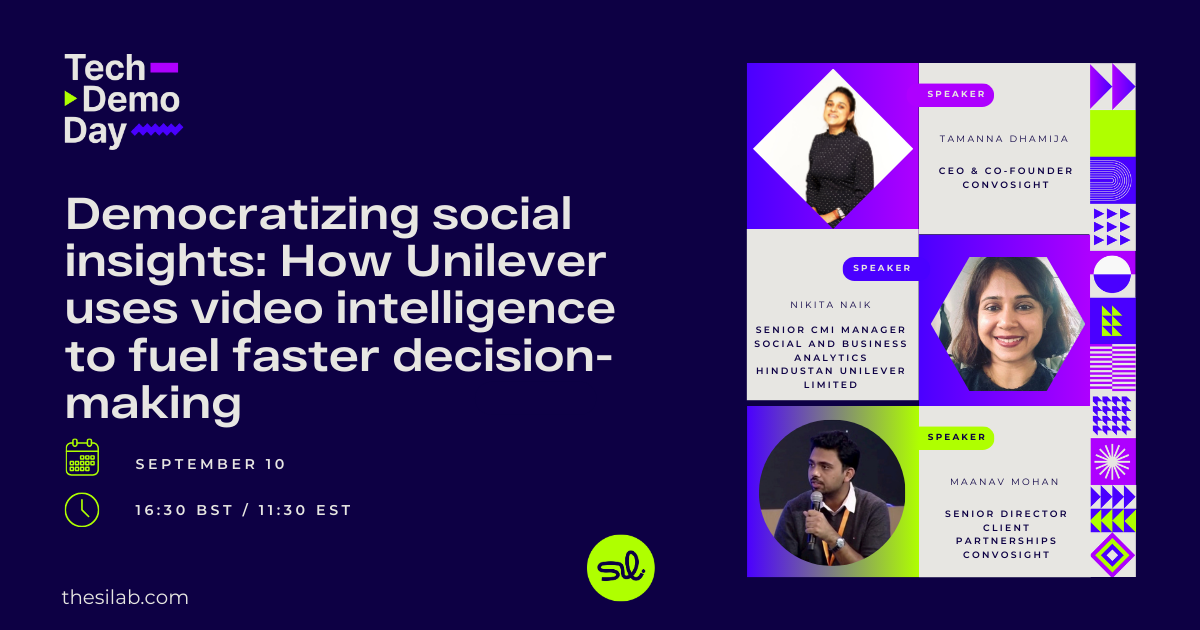
Vox Pop: What are the meaningful questions that can be answered with social media intelligence?
All too often social intelligence projects start as "can we do some social listening?" It's directionless and ultimately doesn't produce results. So, we asked our experts what are the meaningful questions that can be asked of social media intelligence? Here's what they had to say.
Jeremy Hollow, Founder, Listen+Learn Research

We wrote about this recently and there are so many! So, we thought we’d share the Top 10 questions that we’ve loved solving recently:
1. Can you help me prove the commercial value of providing good service?
2. What can we do to be there better for people who have just been told they have a life-changing medical condition?
3. How can we appeal to an audience who has no interest in what we’ve got to say?
4. How can we make sure our new advert makes sense and resonates with people?
5. Can you help us understand the reasons behind what we’re seeing in our performance data?
6. We want to launch a new version of our product. Where should we prioritize our investment?
7. What does ‘green’ fashion actually mean? How is this trend developing and changing behaviors?
8. Can we find any new insights around the role of the unexpected when people are going ‘out, out’?
9. How do people across the world make their best home?
10. What does the global advertising industry need to do to improve diversity and inclusion for its employees and the sector?
And here’s our least favorite question… “Can we do a bit of social listening…?”
It’s time to take this data seriously, not as an afterthought. If we don’t set a project up well, to begin with, it’s going to be an uphill struggle from then on. Let’s give it the respect it deserves so that it can be used seriously alongside more traditional forms of research.
Malena Roche, Multilingual Social Media Analyst

I came to the world of Social Media Analysis from a background of linguistics research. When I think about the questions that can be answered with digital consumer data intelligence in relation to linguistics, the first thing that comes to mind is HOW.
What I mean by this is how are people talking about my client/their product? This is where sentiment analysis has a key role: are the metrics of positive/neutral/negative enough? I would say no. Tools don’t give you a deeper linguistic analysis: Why is a certain comment negative? And is it even negative at all? Often NLP tools aren’t able to grasp things like sarcasm or figures of speech (eg. “This chocolate is to die for” could easily be machine-tagged as negative).
To elaborate on this, positive or negative are -in my opinion- very superficial metrics. Why is a certain comment positive? Is it humorous, is it complementary, is the costumer pleasantly surprised? And on the other hand, why is a comment classified as negative? Is it showing disappointment? Or anger? Or is the customer concerned?
Social data that is analyzed combining tools with a good human linguistic analysis can extract a lot more useful marketing insights out of a social media dataset.
Javier Buron, CEO, Audiense

Although Digital Consumer Intelligence can answer many questions about the understanding of an audience, I'd highlight four of them that would be almost impossible to do with traditional consumer research:
- Who know who and the interconnected communities that shape an audience.
- Why/How they know each other and specifically, the affinity towards brands of influencers of these communities.
- How the message is spread and how different communities reach differently to the same topic.
- The motivating factors that make the audience, segment or community make a decision.
In the coming 'cookie-less world' I believe that these 4 aspects, that DCI can uniquely answer, will fuel creative processes and audience-first strategies. Indeed, Nielsen has always sited Creative as the mean reason for why advertising campaigns are successful (47%), way above Targeting (9%). We believe this change is for the better and allows brands to be truly audience-first, and puts creativity and audience marketing back at the heart of the strategy.
This interview was recorded via LinkedIn Live, if you prefer to view on LinkedIn, click the button below.
View InterviewSee related content





%20(1).jpeg)





